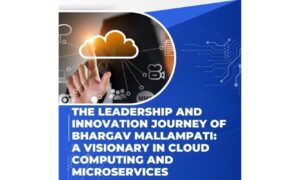Cloud computing is changing our world in many ways, which explains why companies are expected to spend over $27 billion on it by 2026. However, it also creates some complications.
Many online applications are rather simple to use. Cloud applications, however, are more complex in nature. In cloud applications, the app delivery chain moves from the end-user through the browser (PC or mobile device), through the online (local Internet service provider (ISP), or mobile operator), through a 3rd party (cloud service provider or content delivery network (CDN)), to the complex data center infrastructure.
All of those elements are essential to cloud app performance and make cloud testing and monitoring very complex.
Solving cloud performance problems requires a comprehensive analysis of the whole application delivery chain, from the end-user to the info center servers. Critical to cloud monitoring is the ability to spot specific errors within the delivery chain.
Once the external cloud monitoring agent/tool is initialized, IT managers and system administrators can quickly and efficiently resolve performance issues and get the most out of their apps.
External cloud monitoring also saves you a lot of time and effort when deploying code to your system or creating an integrated server. From low-level performance metrics to key business indicators-when servicing your customers, you want to keep all the tracks that affect your success. Server-side logs for stack tracing, give you a complete insight into the business and software processes behind your product. This is where cloud monitoring tools and services come to play.
They monitor, help you manage, and evaluate the performance, infrastructure, services, and applications of your cloud computing architecture and make sure your users and customers are getting the most out of your platform. Cloud monitoring can be the process of creating observable infrastructure automation services, applications, and user experiences. You can check the performance and availability of the entire infrastructure or allow it to allow in each part.
Cloud monitoring works by collecting observability data from the entire IT infrastructure and is presented between people such as graphs, graphics, alerts, etc. during the format represented by the API.
Although you support you only in the aspect of monitoring, you will provide full screens such as other important performance indicators, metrics, protocols, traces, and more. Some are easy to set up and other things include more complex and more complex and more complex tests and sales processes without the need to talk with sales. Each solution has its advantages and disadvantages-the reliability of the response with better setup complexity is delivered in the configuration and easy to use.
Why Cloud Application Monitoring Is Important?
Enterprises lose revenue and customers by using poorly performing cloud applications. As cloud apps become more complex, performance issues can occur, resulting in lower conversions and higher bounce rates. As a result, companies adopting cloud-based web apps should constantly monitor performance, feature, and availability issues. The complexity of managing cloud applications.
Cloud monitoring simplifies application management. Resolving cloud performance issues requires a comprehensive analysis of the entire application delivery chain from end-users to information center servers. Important to cloud monitoring is the ability to identify specific supply chain failures.
Cloud Monitoring Tools
Cloud computing, the public, hybrid, and personal cloud environments have opened up a world of possibilities. Flexibility, on-demand scaling, out-of-the-box services, and associated ease of use allow subsequent platform generations to build on this. However, to take full advantage of all the possibilities, you need to influence a set of challenges. They need good web scraping tools to understand the state of the environment, along with all the key performance indicators that the environment provides.
Note that in some cases, you may need additional tools that can handle these events in real-time before forwarding them to the information store to take full advantage of the information potential and add complex events. please give me.
All available cloud monitoring tools and services help collect observable data, but they take different approaches, offer different capabilities, and come at different costs. Some use cases are better than others. Therefore, try different solutions and choose the one that best suits your needs. If you need help making a decision, check out our monitoring and warning guides that explain the criteria to consider.
- SenseDeep
SenseDeep one of the fastest serverless monitoring platforms for AWS may be a very robust serverless monitoring platform for AWS (Amazon Web Services) that aids users to troubleshoot services along with real-time call tracing and also helps create and display lambda metrics.
- Dashbird
Dashbird is an easy-to-use serverless monitoring platform. The main task of its developers was to make a very logical and accurate service. And they did a great job. Dashboard’s interface makes it easy to monitor and debug problems: it lets you better understand what’s going on with the lambda expressions and API gateways in your account. Dashbird automatically collects data from your application.
You only got to create dashboards via metrics to look at events and filter them. The platform actively analyses logs and metrics to seek out bugs and improve performance. and is extremely useful for debugging the script you prepare by getting the logs themselves. You’ll see an in-depth report of how your serverless solution is getting used and receive notifications on occurring errors.
- Splunk + SignalFx
SignalFx by Splunk is a serverless application monitoring platform with a powerful yet simple log inspection mechanism, with tools for tracing and rapid troubleshooting and incident response, for cloud applications and microservices architecture. View information with real-time visibility and feature performance monitoring.
The SignalFx platform is suitable for developers and engineers who are familiar with software-defined data management, without being tied to a service provider.
- Thundra
Thundra is serverless app integrity and security monitoring service. It separates execution data from Lambda functionality and supports chart reading, debugging, and end-to-end monitoring of serverless architectures. Thundra provides detailed monitoring of distributed systems and does not increase latency.
This service makes extensive use of machine learning and data science. To understand application behavior patterns, Thundra automatically blacklists or identifies anomalies that perform other actions.
- Epsagon
Epsagon provides automated distributed tracing in the most complex serverless environments. This service provides the service’s dashboard, intuitive user interface, and infrastructure components. Epsagon also provides correlation and serverless monitoring tools to help you conveniently visualize your data and get a complete picture of your app’s performance.
Evaluate your app’s performance with customizable logs and cloud management tools. This is important for quickly eliminating bottlenecks. Epsagon is great for troubleshooting AWS Lambda, but it still doesn’t support multiple AWS accounts and isn’t mobile-friendly.
- Sentry
Sentry makes debugging efficient with Python and AWS Lambda to stay your serverless applications running reliably. The service provides you with tools to look at the runtime environment in real-time. Plus, you’ll use it to supply all the knowledge you would like for quick troubleshooting. Sentry uses runtime tools to capture errors.
This helps the user diagnose a drag and find its cause through stack tracing, navigation chains, environment context, and functions. Sentry is ideal for beginners and corporations that want to seek out function delays fast with distributed tracing and error monitoring for serverless functions.
- Serverless Framework PRO
Serverless Framework Pro is ideal for small companies to optimize development With Serverless Framework Pro, you just monitor and troubleshoot your serverless applications. This service provides tools to completely manage the lifecycle of your serverless application and automate everything such as CI/CD with zero configuration, observability, troubleshooting, and more. You can easily hook up with your AWS and GitHub accounts and choose repositories and test and deploy your application.
- AppDynamics
Available in each software program as a carrier and an on-premise model, AppDynamics gives cloud-primarily based community tracking gear that can help you compare the overall performance of the complete stack that runs your services. It`s extra targeted at huge organizations presenting the energy to connect utility overall performance metrics with infrastructure facts, alerting, and commercial enterprise-degree metrics.
The platform offers you insights into your surroundings, from top-degree transactions which are understood via way of means of the commercial enterprise executives to the code-degree data beneficial for DevOps and developers.
- Dynatrace
Dynatrace is a full-stack observability answer that introduces a person-pleasant method for tracking your cloud applications, infrastructure, and logs. It helps one strolling agent that, as soon as installed, is frequently managed thru Dynatrace UI making tracking smooth and high-quality to parent with. Available in each software program as a carrier and on-premise fashions it’s going to fulfill maximum of your tracking wishes in terms of utility overall performance tracking, actual customers, logs, and infrastructure.
- CA Unified Infrastructure Monitoring (UIM)
DX Infrastructure Manager (formerly known as CA Unified Infrastructure Monitoring) is available in both SaaS and on-premises models and is intended for enterprise customers. It could be an integrated tool that can monitor the performance of hybrid clouds, services, applications, and infrastructure elements such as switches, routers, and storage devices.
With actionable log analysis, out-of-the-box dashboards, and notifications with anomaly detection algorithms, this solution provides a retroactive and proactive view of your IT environment.



































